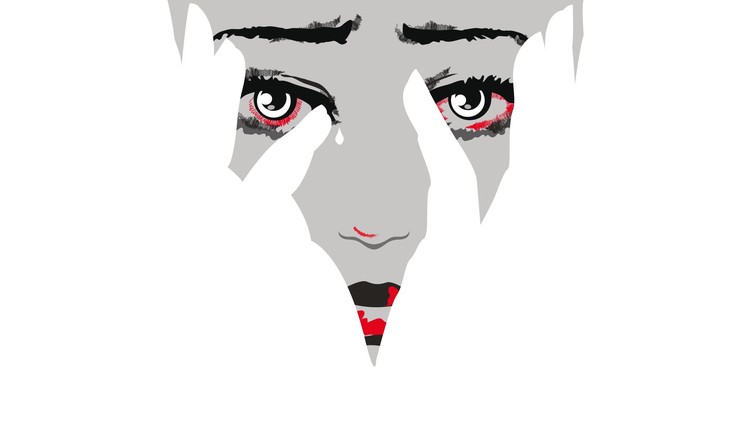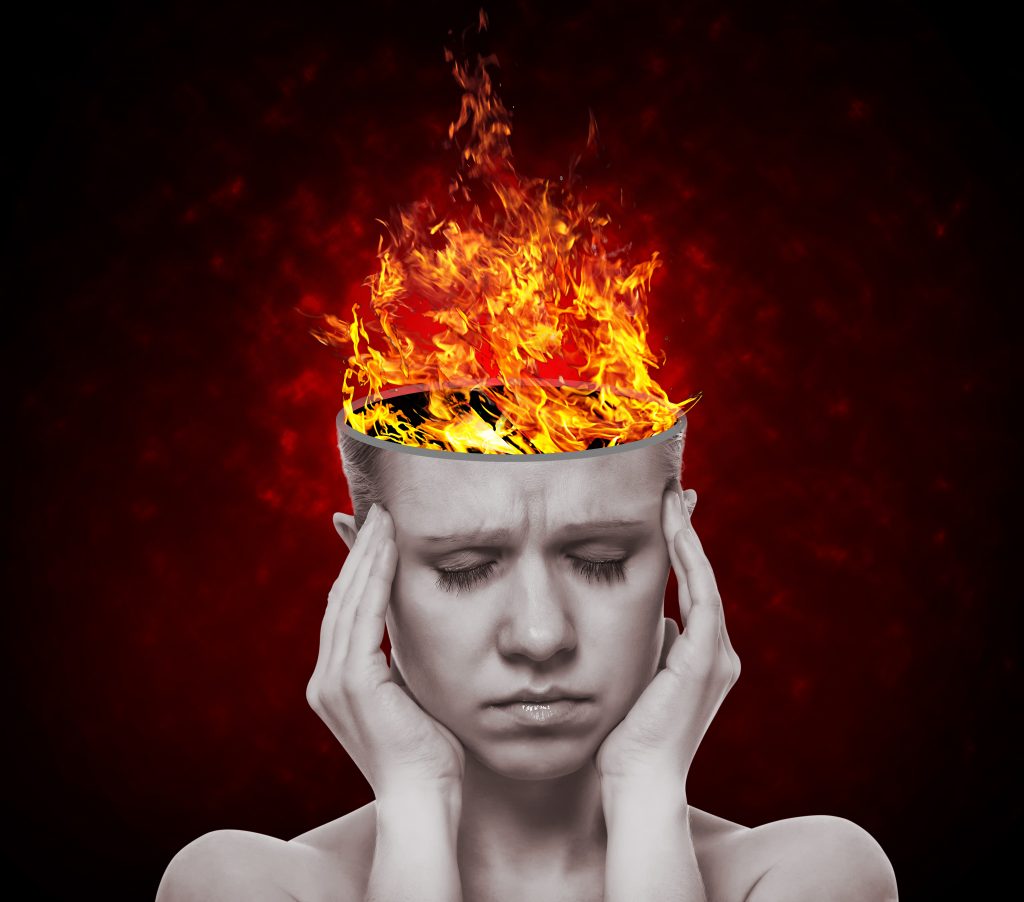If human beings were meant to be entirely stable entities, then “stabilizing” them would be an entirely good thing, a target for mental health treatment that all could agree on. But it’s way more complex than that: healthy humans are constantly moving and changing, they have a complex mix of stability and instability that is hard to pin down.
All this relates to one of my favorite subjects, the intersection of creativity and madness.
It is a curious fact that people seen as “psychotic” or “schizophrenic” may show sometimes more creativity, and sometimes less creativity, than “normals.”
A good example of this was a test done to see how
people “guess” which of two alternatives (e.g., “left” or “right”) will occur next, when in fact the order of outcomes is random. We can analyze the sequence of guesses and quantify their entropy (unpredictability). Healthy people tend to have a Gaussian distribution of sequential guesses, with most responses at intermediate levels of entropy, and fewer very redundant or very entropic responses. In contrast, people with schizophrenia tended to show both more redundant (predictable) and more entropic (unpredictable) responses; longer periods of predictable behavior were interrupted by very unpredictable behavior.
That comes from an interesting little article, Creative cognition and systems biology on the edge of chaos .
What the guessing game test, and other research tends to show, is that people diagnosed with psychosis are often both too “unstable” at times, but also overly stable at other times (actually more of the time.) This corresponds to the way people experiencing “psychosis” can be both very flexible and innovative in the way they understand things, and also often very rigid and uncreative in other ways or at other times.
When I was a young guy going through a somewhat “mad” period, I identified as being very creative, while I saw “normals” as being more like robots or insects or something. The truth at the time was that I myself was often too much like the robot or whatever – I would fall into ruts or various sorts of “false selves” that weren’t very connected with anything alive within me, and then here and there I would be very weird or random in efforts to break free of those ruts.
This was creativity in a sense, but not really all that useful of creativity for most audiences. (When I shared my writings in a creative writing classes, a number of the other students thought it sounded like “mental illness” rather than anything of value, though the teacher was willing to see it as fitting into some trends in creative writing that were themselves chaotic and irrational, like Dada.)
The authors of the article point out that “the combination of novelty and utility …. is the hallmark of creativity.” Getting to the utility part requires some stability, so successful creativity requires being on the edge of chaos, not “over the edge.”
Here’s another interesting paragraph:
We believe this model conforms with the inverted-U model relating creativity with psychopathology traits and genetic risk for psychosis (Richards et al. 1988) and with existing literature showing examples of exceptional creativity in individuals with mental illness, even though the aggregated results tend to show no overall increase in creative achievement for those with severe mental illness (Abraham et al. 2007, Eisenman 1990, Jaracz et al. 2012, Rothenberg 1983). Consistent reports suggest that healthy relatives of those with schizophrenia, and those with schizotypal traits, may have elevated creativity; we suggest that these individuals may have a tendency to greater network flexibility, but additional traits help protect them from developing schizophrenia (Abraham and Windmann 2008, Batey and Furnham 2008, Karimi et al. 2007, Kinney 2001, Nelson and Rawlings 2010, Schuldberg 2000). Consistent with this are Kinney’s (2001) results showing higher levels of creativity in people with intermediate levels of schizotypal or schizoid traits, relative to those with lower levels of these traits and relative to those with overt schizophrenia.
I think to be really good at helping people with psychosis, we need to be better at helping people avoid being either too wildly chaotic (the “novelty” part of creative) but also to avoid being too stable, as being “too stable” is just part of the setup for then trying to get free by being too chaotic again. Most modern treatment aims at “stability” without any recognition that there can be too much stability. So treatment is deadening, and then people rebound toward more chaos, but no one notices that the treatment is partly responsible for the urge to rebound or go too far in the instability direction.
Better treatment would help people get better at hovering at that edge between stability and chaos, madness and sanity…….
I think it would be interesting to study creativity in people who have successfully recovered after having for some time fit the criteria for a “schizophrenia” diagnosis – how did they learn to find that middle ground between too much stability and too much instability or novelty?
Another interesting area to study would be the interplay or conflict between the desire for stability and the desire to rebel from it. Looking back I can certainly see how this played a role in my life – I would try to break out of all the regular patterns of thinking and reasoning to avoid being dead or robotic etc., to transcend everyday life, then I would overwhelm myself and others and have to be very dull in order to get back into some kind of manageable order or pattern, then my resentment of this very dullness would provoke more chaotic bursts within thinking, speech and behavior.
Accepting that we need both the stability and the instability, the order and the chaos, the sanity and the insanity, is the key to finding some kind of “healthy balance.” We need to find ways to incorporate this acceptance into every stage of mental health treatment, so that people get the message that their own “instability” has value, even if it may do better if also tempered with an appreciation of stability at various points as well.
Anyway, here’s another article of possible interest that also touches on biological and brain function stuff in both creativity and madness related stuff, Creativity and schizotypy from the neuroscience perspective
I’m curious to hear any other thoughts about these issues………




I appreciate the wealth of information and the training opportunities on this site!! I am glad to have found it and look forward to learning with you all.
Sarah